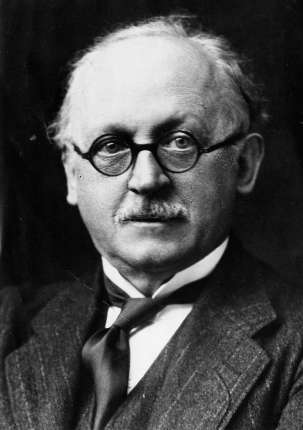(Sir) Edwin Landseer Lutyens
- Born : 29 March 1869 at Kensington, London.
- Married : 4 August 1897 Lady Emily Bulwer-Lytton (1874–1964), at Knebworth, Hertfordshire.
- Knighthood : 1918
- RIBA Gold Medal : 1921
- Died : 1 January 1944 (aged 74) at Marylebone, London
A practising architect for 50 years, Lutyens entered the office of domestic architects Ernest George and Peto in 1887. In 1889 the commission for Crooksbury House, near Farnham gave him the opportunity to set up practice on his own account. About this time he first met garden designer Gertrude Jekyll, for whom he built Munstead Wood in 1896; and by 1902-he had established himself as one of the country's most talented country house architects with Orchards, Munstead; Deanery Garden. Sonning; Tigboume Court; Marsh Court. Stockbridge; and Little Thakeham. Following the tum of the century Lutyens‘ work became more varied. His first London building came with the Country Life offices of 1904, although he failed to win the competitions for the Queen Victoria Memorial and the LCC County Hall. In the winter of 1908-1909, he was appointed architect for Hamp- stead Garden Suburb, with Raymond Un- win as town planner. Here he built St Jude on the Hill and the Free Church, as well as the houses and civic buildings in the central area. In January 1912 Lutyens was appointed to advise the Delhi Planning Commission on the development of the new capital and designed the Viceroy's house, Viceroy's Court and the official bungalows. In 1917 he became one of the official architects to the Imperial War Graves Commission, in which capacity he designed some 90 war memorials, including the cemetery at Etaples and the monumental arch at Thiepval. In the 1920s and 19305 Lutyeus’ office received a whole range of commissions from the Queen Mary's dolls house of 1923 to the head office for the Midland Bank, Poultry; Hampton Court bridge; the British Embassy, Washington; Grosvenor House. Park Lane; and Britannic House, Finsbury Circus. Lutyens was knighted in 1918 for his work at New Delhi, was awarded the Gold Medal of the American Institute of Architects in 1924, and in 1942 became the first architect to be awarded the Order of Merit. [RIBAJ May 1984 page 103]
